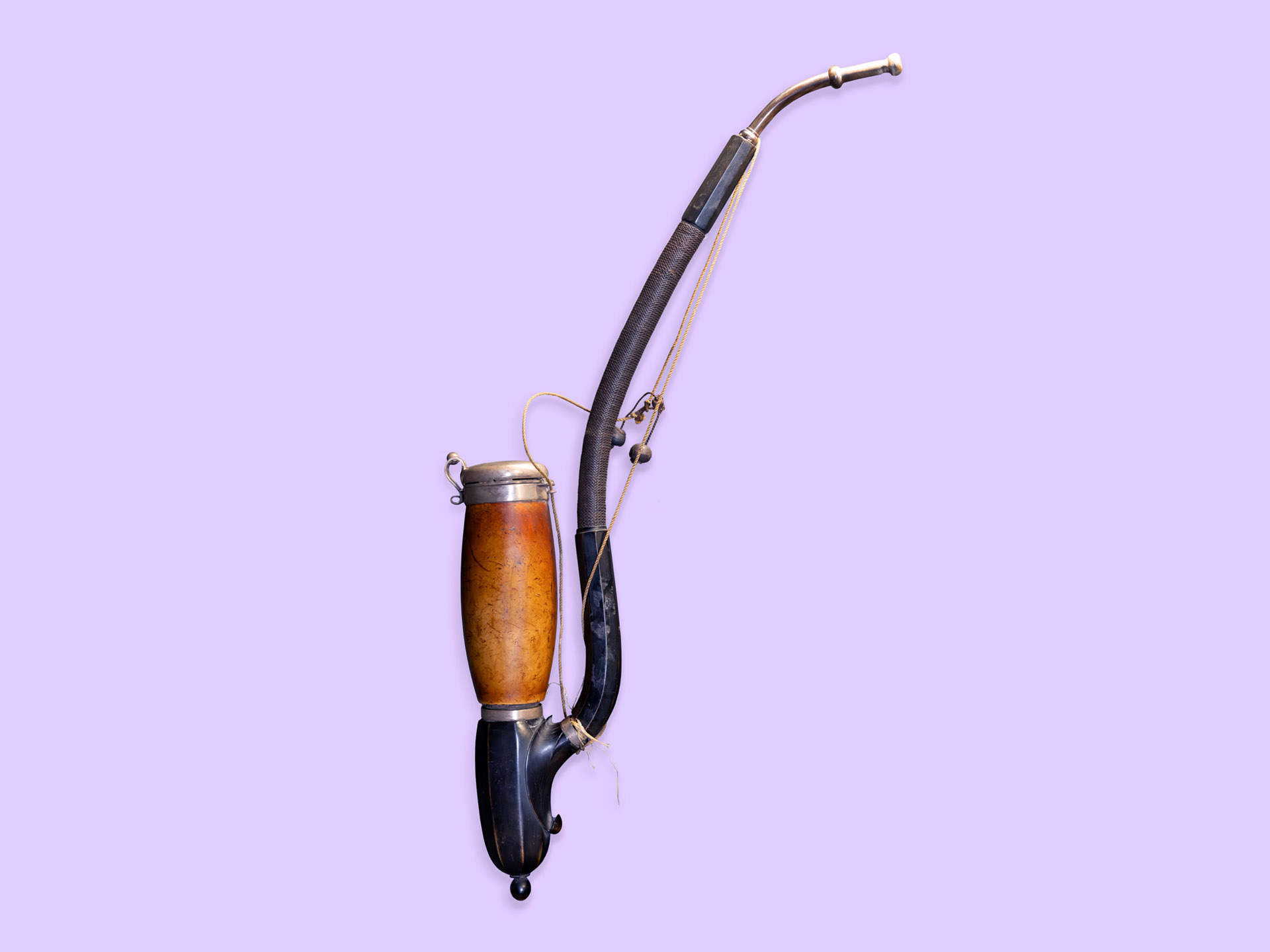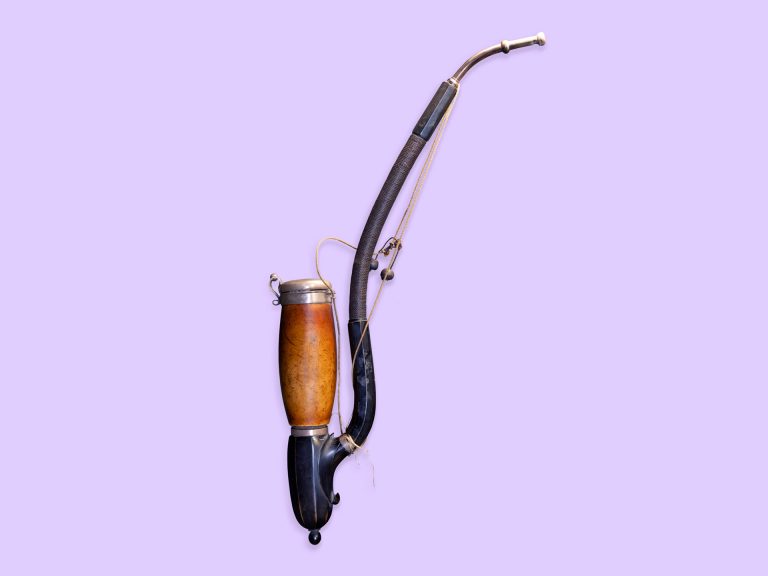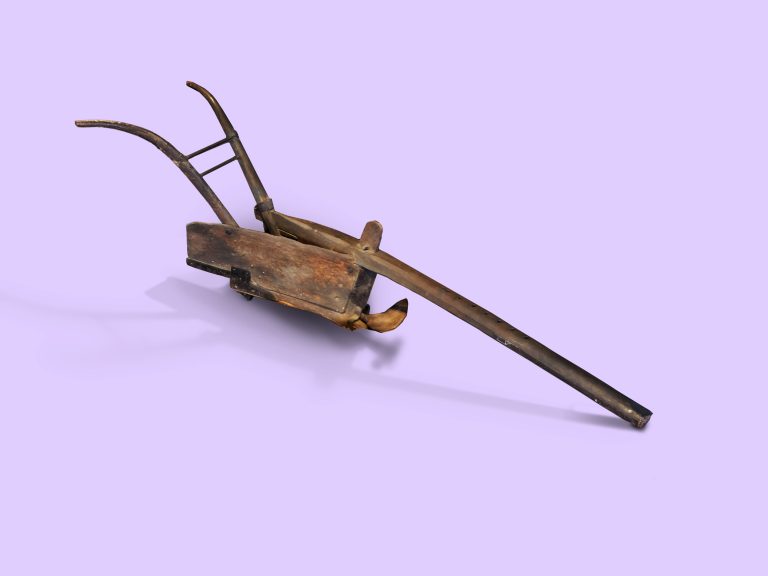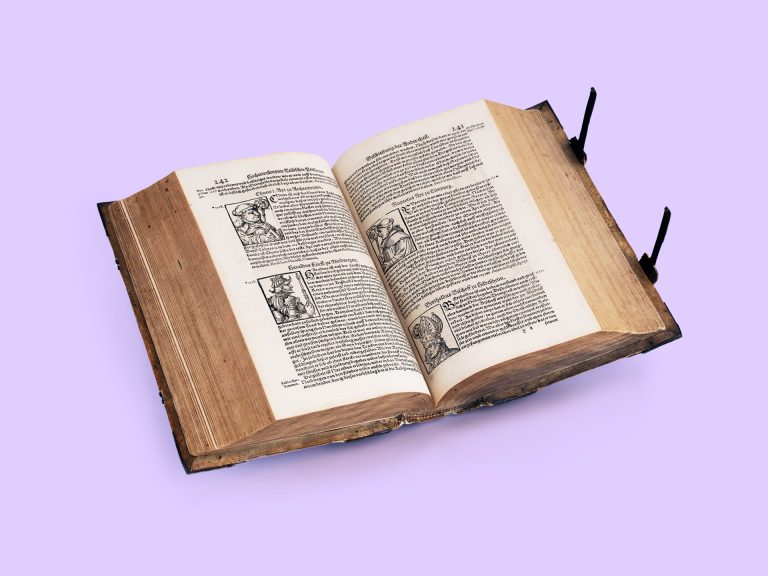The Biedermeierzeit: the discovery of Gemütlichkeit
The period between the Congress of Vienna in 1814 and the German revolutions of 1848/49 was a time of political stagnation. Seeking to exclude ordinary citizens from the political process, governments suppressed criticism with heavy censorship and strict laws. Many people withdrew to the safety and comfort of private life. This way of life became known by the term Gemütlichkeit, an almost untranslatable term combining elements of cosiness, homeliness and comfort.
The poet Ludwig Eichrodt (1827-1892) caricatured the apolitical middle class with his fictional character Gottlieb Biedermaier, thereby establishing a literary trope which early twentieth historians seized upon as encapsulating the period.
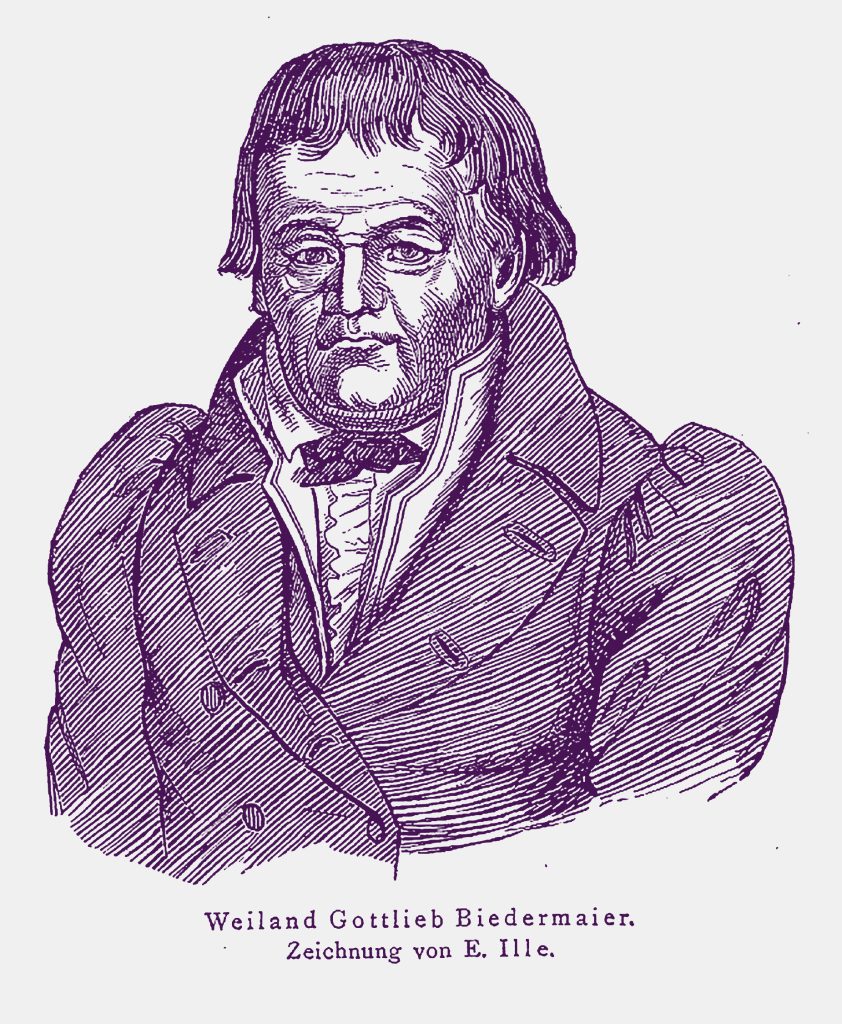
Portrait of the fictional character Gottlieb Biedermaier Illustration from the humorous weekly Fliegende Blätter, E. Ille, Germany, 1855 (Source: Wikimedia Commons)
The reward of a working day: relaxation with a reading pipe
A common trope of Biedermeier art was the portrait of a pipe-smoking family man. At home after a hard day’s work, the man of the house would be shown relaxing in his living room or garden, smoking a pipe.
The most influential painter of this era was Carl Spitzweg (1808-1885). Many of his paintings depict members of the lower middle class, often with an ironic undertone. A number of his works also include a pipe smoker, such as his “The Pastor as a Cactus Lover” from 1856, in which a mild-mannered clergyman stands in a quiet corner of his garden, enjoying his pipe whilst tending to his beloved cacti.
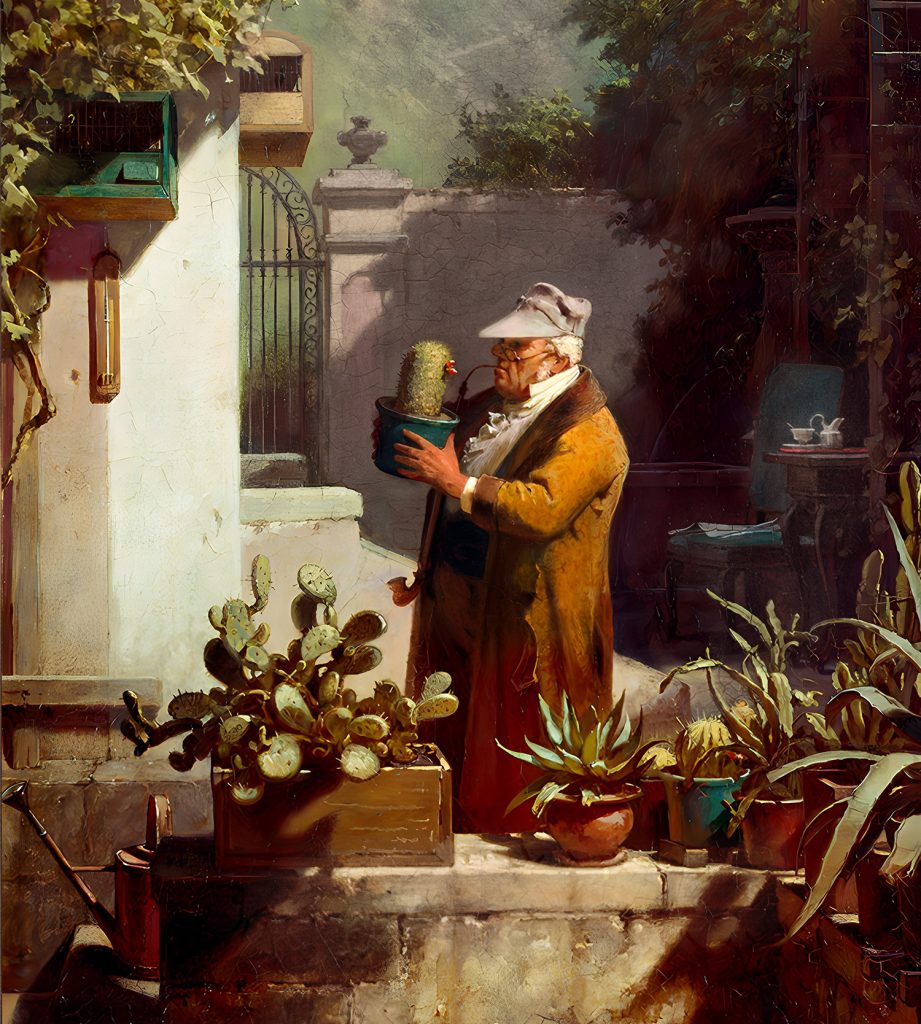
“The Cactus Friend” oil painting (detail), Carl Spitzweg, around 1858, Germany (Source: Museum Georg Schäfer via Wikimedia Commons)
The 60 cm long curved pipe with metal lid on display in the Deutschlandmuseum is a rare example in very good condition. Easier to clamp between the smoker’s teeth than the straight version of the pipe, bibliophiles in particular enjoyed its use as the design positions the tobacco bowl away from the readers eyes and prevents the smoke from obscuring the text. The length of the pipe neck cools the smoke and causes less irritation of the respiratory tract.
The advantages of a Meerschaum pipe
The most important element of a pipe is its bowl, in which the tobacco is burnt. The Biedermeier pipe on display in the Deutschlandmuseum is made of meerschaum. This is a clay material made from silica, magnesia and water and is mined primarily in Turkey, but also in Italy and Tanzania.
Meerschaum is an ideal material for making pipes, as its structure contains countless small pores that make it highly absorbent. As a result, any condensates produced during the burning of the tobacco are absorbed, removing the need for filters. Neutral in flavour, new Meerschaum pipes do not need to be “smoked in”, unlike their wooden counterparts. As a material, a further advantage over wood is its highly fireproof quality, meaning that it is impossible to smoke the pipe hot, which can result in a bitter taste.
A major disadvantage of Meerschaum is its fragility. This makes the good condition of the specimen on display in the Deutschlandmuseum even more pleasing, especially in view of the intensive use (evidenced by the smell of the pipe bowl) to which it has been put over the years.
Property information
Designation
- Date 1840-1850
- Gallery The German Confederation
- Category Everyday Culture
- Origin Germany
- Dimensions 15x60x7 cm (WxHxD)
- Material horn, Meerschaum, metal, wood
Property information
Designation
- Datierung 1840-1850
- Epochenraum The German Confederation
- Kategorie Everyday Culture
- Herkunft Germany
- Dimensionen 15x60x7 cm (WxHxD)
- Material horn, Meerschaum, metal, wood

About the Deutschlandmuseum
An immersive and innovative experience museum about 2000 years of German history
Reading tips and links
Lifesaver? The German Steel Helmet in the First World War
German Tank Museum Munster
Lifesaver? The German Steel Helmet in the First World War
German Tank Museum Munster
Share article
Other objects in this collection
Discover history
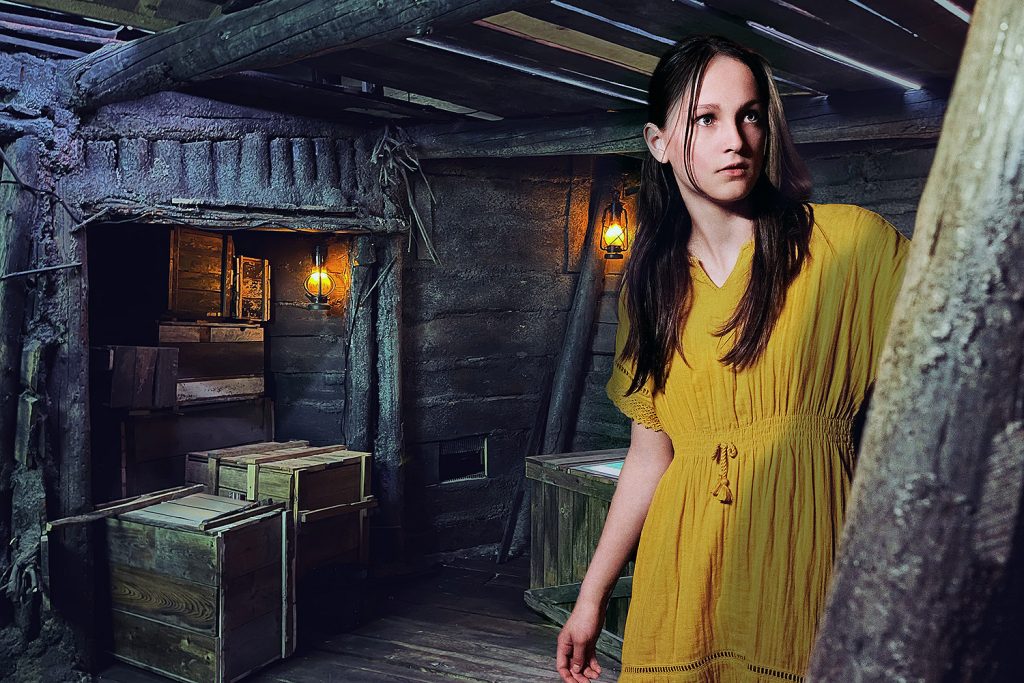
Visit the unique Deutschlandmuseum and experience immersive history
2000 Jahre
12 Epochen
1 Stunde

